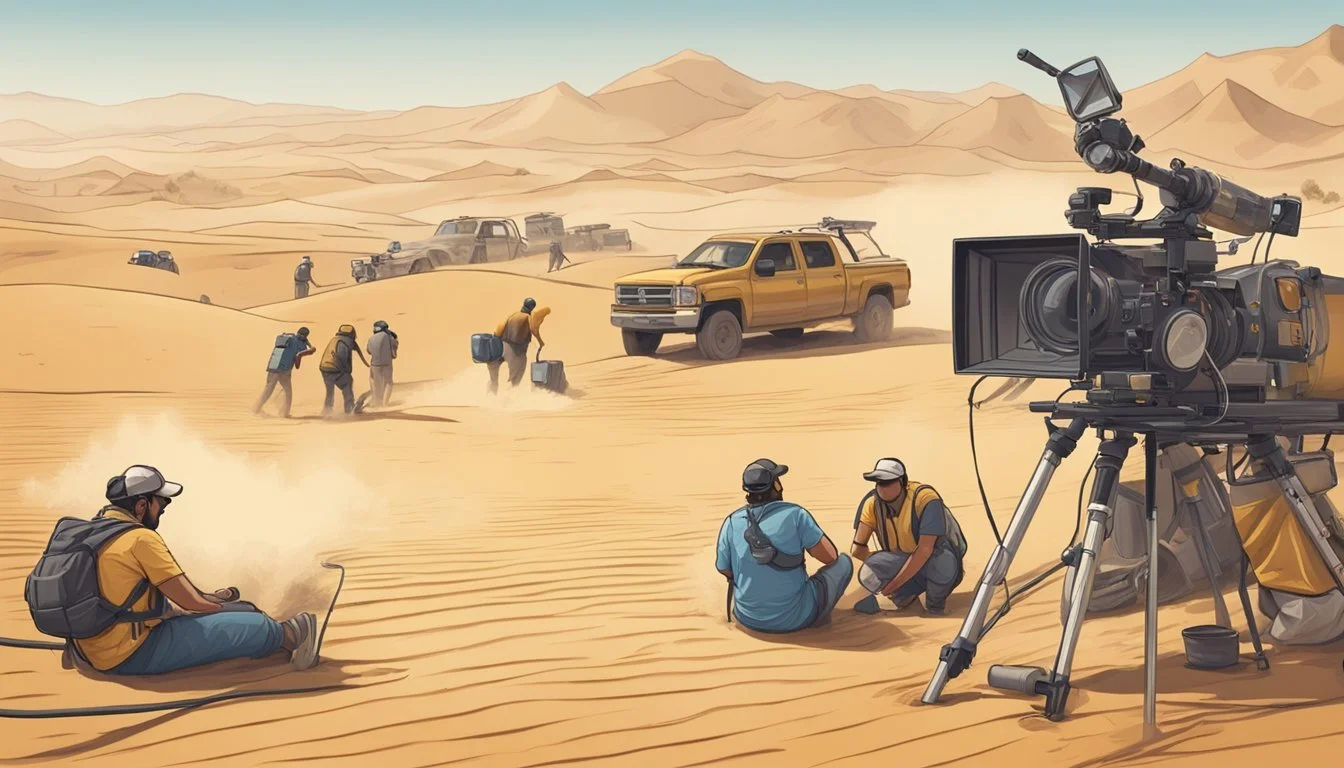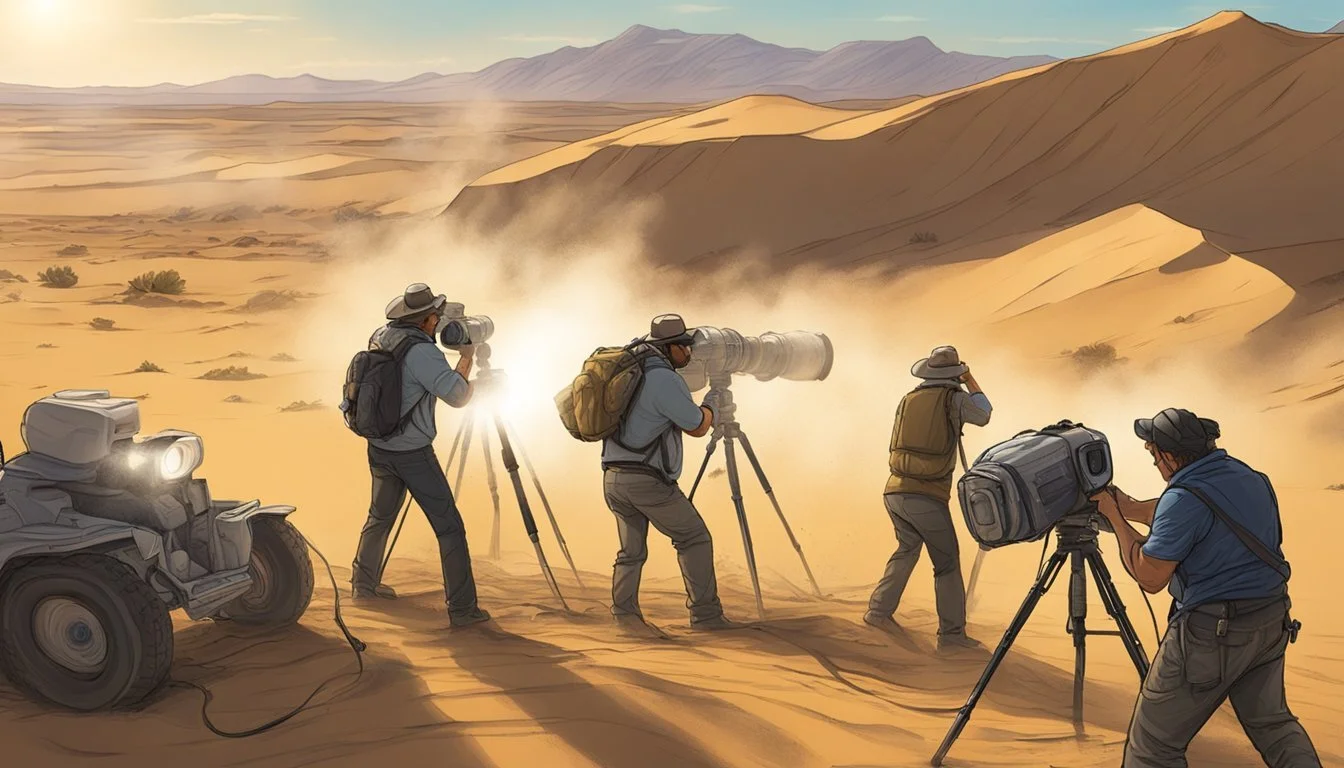The Challenges of Filming in Desert Locations for 'Testament'
Overcoming Harsh Conditions in Epic Production
Filming "Testament" in desert locations presented unique challenges for the production team. The sweeping desert vistas and ancient ruins serve as a breathtaking backdrop for the epic story of Moses, but capturing these landscapes on camera required careful planning and adaptation. From extreme temperatures to logistical hurdles, the cast and crew faced numerous obstacles in bringing the biblical narrative to life.
Desert environments demand specialized equipment and techniques to protect cameras, lighting, and other gear from sand and heat. The production team had to navigate unpredictable weather conditions, including sandstorms that could halt filming at a moment's notice. Finding suitable locations that could double for ancient Egypt and the Sinai desert also proved challenging, with the filmmakers scouting across multiple countries to find the perfect settings.
Despite these difficulties, the harsh desert landscape adds authenticity and visual splendor to "Testament." The production's commitment to filming in these demanding locations allows viewers to fully immerse themselves in Moses' journey, experiencing the raw beauty and unforgiving nature of the biblical world. This dedication to realism enhances the storytelling, making the challenges of desert filming a worthwhile endeavor for the ambitious series.
Cinematic Context of 'Testament'
'Testament' joins a long tradition of biblical epics, particularly those focused on Moses' story. It brings a fresh perspective to familiar events like the Parting of the Red Sea while building on earlier cinematic interpretations.
Position in Biblical Epics
'Testament' stands out in the biblical epic genre by blending dramatic reenactments with expert interviews. This docudrama approach sets it apart from purely narrative films. It incorporates insights from Jewish, Christian, and Muslim religious leaders and scholars, offering a multifaceted view of Moses' journey.
The series aims to balance historical accuracy with compelling storytelling. Its production values rival those of big-budget Hollywood films, with impressive visual effects for key moments like the Parting of the Red Sea.
Comparison to Previous Works
'Testament' inevitably draws comparisons to classic Moses films like 'The Ten Commandments' starring Charlton Heston. While that 1956 epic set a high bar for spectacle, 'Testament' utilizes modern filmmaking techniques to create more realistic depictions of ancient Egypt and the Exodus.
The series also invites comparison to Ridley Scott's 2014 film 'Exodus: Gods and Kings'. 'Testament' differentiates itself through its documentary elements and broader religious perspectives. It aims to provide a more nuanced portrayal of Moses' story, balancing cinematic drama with historical and theological context.
Preliminary Work
Extensive preparation laid the groundwork for filming "Testament" in challenging desert environments. Meticulous research, location scouting, and casting decisions were crucial to bringing the epic story of Moses to life authentically.
Historical Research and Accuracy
The production team delved into ancient Egyptian and Hebrew texts, archaeological findings, and expert consultations to ensure historical accuracy. They studied the architecture, clothing, and customs of the time period to recreate a believable ancient world. Particular attention was paid to the portrayal of Moses and Pharaoh, examining various scholarly interpretations of their relationship and personalities.
The team also researched previous depictions of Moses in film and television, including Christian Bale's portrayal in "Exodus: Gods and Kings," to inform their approach while aiming for a unique interpretation.
Location Scouting and Selection
Finding suitable filming locations posed significant challenges. Modern Egypt was initially considered but ruled out due to logistical and political constraints. The team explored alternative sites that could convincingly stand in for ancient Egypt, Israel, and the Sinai desert.
Morocco, Spain, and Jordan emerged as top contenders. Scouts searched for diverse landscapes, including:
Sweeping desert vistas
Ancient ruins
Areas suitable for recreating Egyptian cities
The chosen locations needed to balance visual authenticity with practical considerations like accessibility, local infrastructure, and crew accommodations.
Casting and Character Portrayal
Casting decisions were pivotal in bringing the biblical figures to life. The search for actors to portray Moses and Pharaoh was particularly intensive. The production sought performers who could convey the complex personalities and internal struggles of these iconic characters.
For Moses, the team looked for an actor capable of portraying:
A conflicted leader
A man grappling with his identity
A powerful prophet
The role of Pharaoh required an actor who could embody:
Regal authority
Stubbornness
Vulnerability in the face of divine challenges
Supporting roles were cast with attention to historical accuracy and dramatic presence. The team aimed to assemble a diverse cast that could authentically represent the ethnic and cultural landscape of ancient Egypt and the Hebrew people.
Film Production Technologies
Advanced technologies played a crucial role in bringing the epic scale of "Testament" to life. These innovations enhanced the visual storytelling and historical authenticity of the Moses series.
Advancements in CGI and Visual Effects
CGI and visual effects transformed desert locations into ancient Egyptian landscapes. Digital artists recreated massive cities, temples, and monuments with intricate detail. Cutting-edge particle simulations brought the plagues to life, from swarming locusts to rivers of blood.
Volumetric capture technology allowed actors to interact with digital environments seamlessly. This technique enhanced the realism of scenes depicting the parting of the Red Sea and other miraculous events.
Cinematography and Aerial Shots
High-resolution digital cameras captured the stark beauty of desert locations. Drone technology provided sweeping aerial shots of vast landscapes and fleeing crowds. Stabilized camera rigs allowed for smooth tracking shots through narrow alleys and crowded marketplaces.
Specialized lenses and filters enhanced the visual drama of sandstorms and desert heat. Infrared cameras captured unique nighttime scenes, revealing the cool blues of moonlit sands.
Set Design and Costume Realism
3D printing technology enabled the rapid production of intricate set pieces and props. Artisans used these printed templates to create authentic-looking hieroglyphics, statues, and architectural details.
Laser scanning preserved real-world locations digitally. This data helped designers create accurate studio sets that seamlessly blended with on-location footage.
Advanced fabric treatments and aging techniques enhanced costume realism. Designers used historically accurate dyes and weaving methods to recreate period-appropriate clothing textures.
On-Location Filming Challenges
Filming "Testament" in desert locations presented numerous obstacles for the production team. These challenges required extensive preparation, adaptability, and cultural awareness to overcome.
Logistical Hurdles and Planning
Remote desert locations posed significant logistical challenges for the "Testament" production. Transporting equipment, crew, and actors to filming sites in Morocco, Jordan, and other Middle Eastern countries demanded meticulous planning. The team had to coordinate complex travel arrangements and ensure adequate supplies of food, water, and fuel reached the set daily.
Establishing temporary base camps with essential facilities like power generators, communication systems, and medical support was crucial. The production team worked closely with local fixers to navigate bureaucratic processes and secure necessary permits for filming in protected areas or near historical sites.
Weather Conditions and Safety
Extreme desert weather presented constant challenges during the filming of "Testament." Scorching daytime temperatures often exceeded 40°C (104°F), while nights could be surprisingly cold. The production schedule had to be carefully planned around the intense midday heat to protect cast and crew from heat exhaustion and dehydration.
Sandstorms posed another significant risk, potentially damaging sensitive equipment and halting production. The team implemented robust safety protocols, including regular weather monitoring and emergency evacuation plans. Specialized gear like protective covers for cameras and sound equipment became essential to combat sand and dust infiltration.
Local Permissions and Cultural Sensitivity
Filming "Testament" in predominantly Muslim countries required a deep understanding of local customs and religious sensitivities. The production team worked closely with government officials and community leaders to obtain necessary permits and ensure compliance with local regulations.
Respect for cultural norms was paramount. The crew received cultural awareness training to avoid unintentional offense. When recreating ancient Egyptian cities or depicting religious events, consultations with local historians and religious experts helped maintain authenticity while respecting modern sensibilities.
Language barriers presented additional challenges. Hiring local translators and production assistants proved invaluable in facilitating communication with local authorities and the community, fostering goodwill and smooth operations throughout the filming process.
Post-Production Fine-Tuning
Desert filming presents unique challenges that extend into post-production. Careful color grading and visual styling enhance the harsh environment's beauty, while precise editing creates a compelling narrative flow.
Color Grading and Visual Styling
Color grading for desert scenes in "Testament" requires a delicate balance. Colorists work to emphasize the sun-baked landscapes without oversaturating the image. They often use warmer tones to evoke the scorching heat and create a visual representation of the biblical setting.
Contrast adjustments highlight the interplay of light and shadow on sand dunes. Careful attention is paid to skin tones, ensuring actors don't appear washed out against bright backgrounds. Visual effects may be employed to enhance sky colors or add subtle atmospheric elements like heat haze.
Editing for Pacing and Narrative Flow
Editing "Testament" focuses on maintaining narrative momentum across vast desert expanses. Editors carefully select shots that convey both the epic scale of the Exodus story and intimate character moments.
They may use longer takes to emphasize the grueling nature of desert travel, interspersed with shorter cuts for dramatic encounters. Cross-cutting techniques can build tension between pursuing Egyptian forces and fleeing Israelites.
Sound design plays a crucial role, with editors working closely with sound teams to layer in wind effects, footsteps on sand, and distant animal calls. This auditory landscape helps maintain viewer engagement during quieter visual moments.
Impact and Reception
"Testament" stirred audiences and critics with its portrayal of Moses and the Exodus. The series' ambitious desert filming sparked discussions on biblical accuracy and cultural representation.
Critical Reviews and Audience Feedback
Critics praised the show's stunning visuals, particularly the desert landscapes that served as a backdrop for the Exodus story. Some reviewers highlighted the authentic feel of the locations, noting how they enhanced the biblical narrative.
Audience reactions were mixed. Many viewers appreciated the effort to bring the story of Moses to life in a visually compelling way. Others felt the series took liberties with the biblical account.
The series' portrayal of ancient Egyptian culture garnered both praise and criticism. Some experts commended the attention to historical detail, while others pointed out inaccuracies.
Biblical Accounts and Cultural Influence
"Testament" reignited interest in biblical epics, drawing comparisons to classic films like "The Ten Commandments". The series' interpretation of the Exodus story sparked debates among religious scholars and historians.
The show's depiction of the Passover story resonated with Jewish viewers, who noted its significance in their cultural heritage. Some religious leaders used the series as a teaching tool, discussing its portrayal of key biblical events.
"Testament" also influenced popular culture, inspiring renewed interest in ancient Egyptian history and biblical narratives. The series' costume and set designs influenced fashion and interior decorating trends.
Conclusion
Filming "Testament" in desert locations presents unique challenges that demand resilience and innovation. The harsh environment tests both equipment and crew, requiring specialized gear and careful planning.
Filmmakers must adapt their techniques to capture the raw beauty of the landscape while protecting sensitive equipment. Expert knowledge of survival skills becomes crucial for ensuring safety in remote areas.
The human spirit shines through as cast and crew persevere against extreme heat, sandstorms, and logistical hurdles. Their dedication brings Moses' epic journey to life on screen.
Ultimately, the difficulties of desert filming push the boundaries of creativity. Directors and cinematographers discover new ways to frame shots and utilize natural lighting.
These challenges often result in breathtaking visuals that transport viewers to ancient times. The final product showcases not just the biblical story, but also the triumphs of modern filmmaking in unforgiving terrain.







